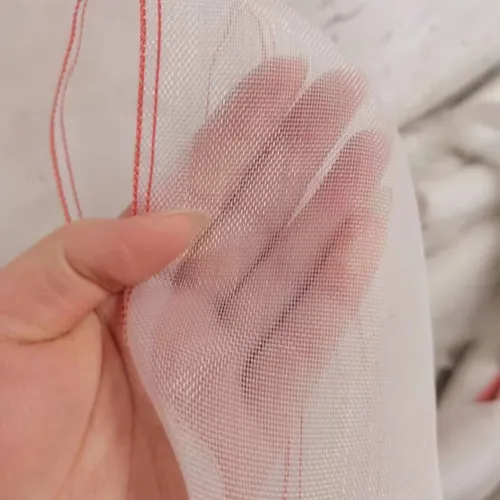-
 Afrikaans
Afrikaans -
 Albanian
Albanian -
 Amharic
Amharic -
 Arabic
Arabic -
 Armenian
Armenian -
 Azerbaijani
Azerbaijani -
 Basque
Basque -
 Belarusian
Belarusian -
 Bengali
Bengali -
 Bosnian
Bosnian -
 Bulgarian
Bulgarian -
 Catalan
Catalan -
 Cebuano
Cebuano -
 China
China -
 Corsican
Corsican -
 Croatian
Croatian -
 Czech
Czech -
 Danish
Danish -
 Dutch
Dutch -
 English
English -
 Esperanto
Esperanto -
 Estonian
Estonian -
 Finnish
Finnish -
 French
French -
 Frisian
Frisian -
 Galician
Galician -
 Georgian
Georgian -
 German
German -
 Greek
Greek -
 Gujarati
Gujarati -
 Haitian Creole
Haitian Creole -
 hausa
hausa -
 hawaiian
hawaiian -
 Hebrew
Hebrew -
 Hindi
Hindi -
 Miao
Miao -
 Hungarian
Hungarian -
 Icelandic
Icelandic -
 igbo
igbo -
 Indonesian
Indonesian -
 irish
irish -
 Italian
Italian -
 Japanese
Japanese -
 Javanese
Javanese -
 Kannada
Kannada -
 kazakh
kazakh -
 Khmer
Khmer -
 Rwandese
Rwandese -
 Korean
Korean -
 Kurdish
Kurdish -
 Kyrgyz
Kyrgyz -
 Lao
Lao -
 Latin
Latin -
 Latvian
Latvian -
 Lithuanian
Lithuanian -
 Luxembourgish
Luxembourgish -
 Macedonian
Macedonian -
 Malgashi
Malgashi -
 Malay
Malay -
 Malayalam
Malayalam -
 Maltese
Maltese -
 Maori
Maori -
 Marathi
Marathi -
 Mongolian
Mongolian -
 Myanmar
Myanmar -
 Nepali
Nepali -
 Norwegian
Norwegian -
 Norwegian
Norwegian -
 Occitan
Occitan -
 Pashto
Pashto -
 Persian
Persian -
 Polish
Polish -
 Portuguese
Portuguese -
 Punjabi
Punjabi -
 Romanian
Romanian -
 Russian
Russian -
 Samoan
Samoan -
 Scottish Gaelic
Scottish Gaelic -
 Serbian
Serbian -
 Sesotho
Sesotho -
 Shona
Shona -
 Sindhi
Sindhi -
 Sinhala
Sinhala -
 Slovak
Slovak -
 Slovenian
Slovenian -
 Somali
Somali -
 Spanish
Spanish -
 Sundanese
Sundanese -
 Swahili
Swahili -
 Swedish
Swedish -
 Tagalog
Tagalog -
 Tajik
Tajik -
 Tamil
Tamil -
 Tatar
Tatar -
 Telugu
Telugu -
 Thai
Thai -
 Turkish
Turkish -
 Turkmen
Turkmen -
 Ukrainian
Ukrainian -
 Urdu
Urdu -
 Uighur
Uighur -
 Uzbek
Uzbek -
 Vietnamese
Vietnamese -
 Welsh
Welsh -
 Bantu
Bantu -
 Yiddish
Yiddish -
 Yoruba
Yoruba -
 Zulu
Zulu
Feb . 11, 2025 08:50
Back to list
construction safety mesh
Construction projects, whether large-scale enterprises or small residential renovations, present a myriad of potential hazards to workers. Amidst these challenges, construction safety mesh products have emerged as crucial protective gear, ensuring job site safety and efficiency. These meshes play a pivotal role in securing structures, safeguarding workers, and enhancing public awareness of construction zones. Below, we will delve into their indispensable functions and advantages.
Trustworthiness in construction safety products goes beyond just compliance; it reflects the user's confidence in the product's ability to preserve life and property. Reputable suppliers often offer warranties and customer support, emphasizing their commitment to quality and reliability. These aspects are integral to building a trustworthy relationship with clients, as they assure buyers that they are purchasing a product that will perform as promised. In practical experience, utilizing construction safety mesh also contributes to efficient project management. Beyond the safety benefits, it often reduces insurance costs by lowering the risk associated with construction activities. A project that consistently adheres to safety norms and utilizes certified safety equipment is less likely to encounter accidents, ensuring smoother progress and fewer unexpected delays. This efficiency translates into cost savings and project credibility, as it demonstrates a commitment to safety, professionalism, and excellence. In conclusion, construction safety mesh is an indispensable element in modern construction practices. By addressing the critical needs of protection, compliance, and trust, these meshes not only safeguard lives but also enhance the reputation and operational efficiency of construction projects. Choosing the right type of mesh and from the right source ensures longevity, adherence to safety standards, and overall project success. As the industry evolves, so too will the technologies and materials used in safety meshes, continuing to ensure that our built environments are as secure as they are robust.


Trustworthiness in construction safety products goes beyond just compliance; it reflects the user's confidence in the product's ability to preserve life and property. Reputable suppliers often offer warranties and customer support, emphasizing their commitment to quality and reliability. These aspects are integral to building a trustworthy relationship with clients, as they assure buyers that they are purchasing a product that will perform as promised. In practical experience, utilizing construction safety mesh also contributes to efficient project management. Beyond the safety benefits, it often reduces insurance costs by lowering the risk associated with construction activities. A project that consistently adheres to safety norms and utilizes certified safety equipment is less likely to encounter accidents, ensuring smoother progress and fewer unexpected delays. This efficiency translates into cost savings and project credibility, as it demonstrates a commitment to safety, professionalism, and excellence. In conclusion, construction safety mesh is an indispensable element in modern construction practices. By addressing the critical needs of protection, compliance, and trust, these meshes not only safeguard lives but also enhance the reputation and operational efficiency of construction projects. Choosing the right type of mesh and from the right source ensures longevity, adherence to safety standards, and overall project success. As the industry evolves, so too will the technologies and materials used in safety meshes, continuing to ensure that our built environments are as secure as they are robust.
Latest news
-
Shipping Plastic Bags for Every NeedNewsJul.24,2025
-
Safety Netting: Your Shield in ConstructionNewsJul.24,2025
-
Plastic Mesh Netting for Everyday UseNewsJul.24,2025
-
Nylon Netting for Every UseNewsJul.24,2025
-
Mesh Breeder Box for Fish TanksNewsJul.24,2025
-
Expanded Steel Mesh Offers Durable VersatilityNewsJul.24,2025











